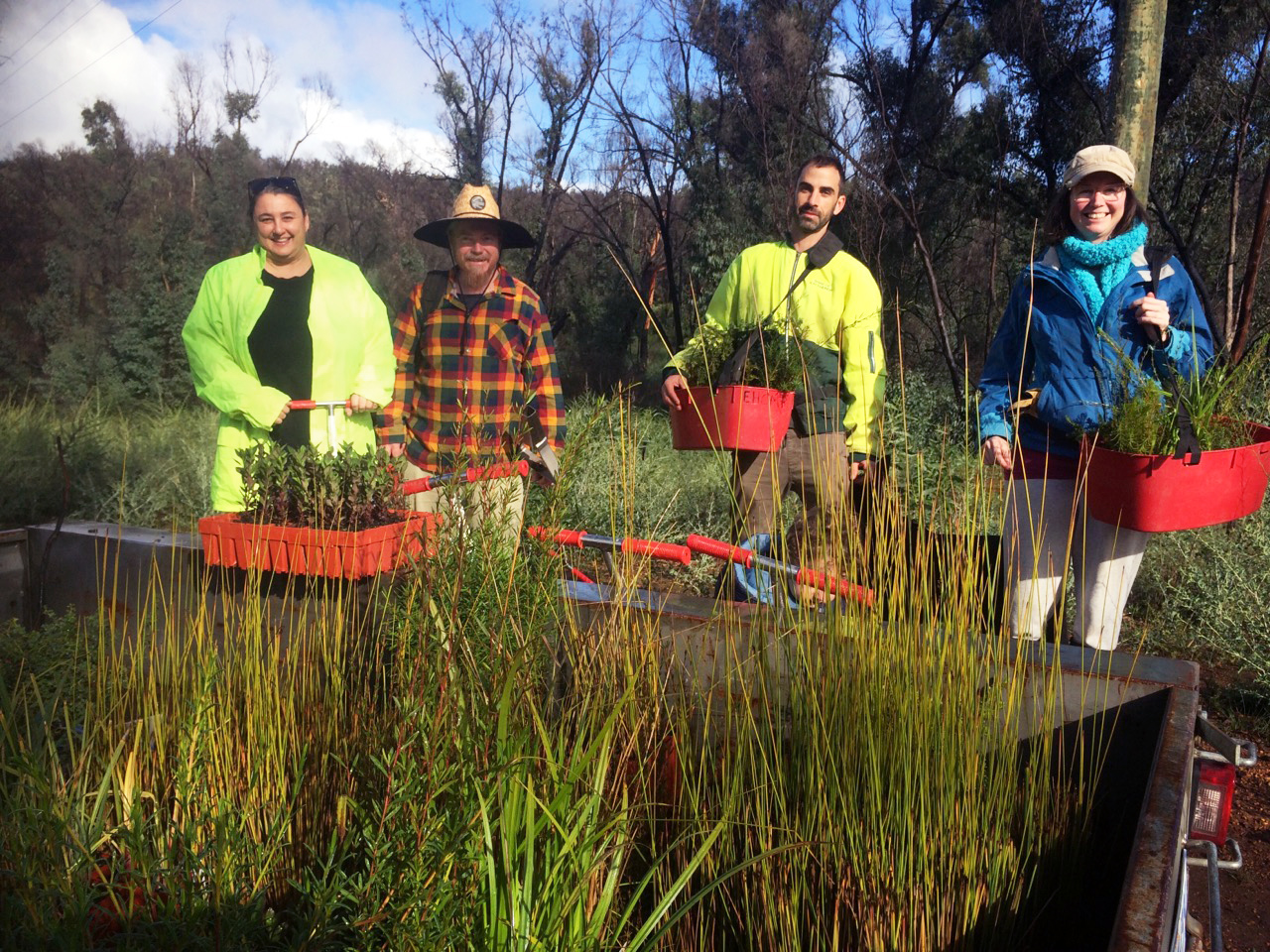Have you ever passed by a bush block, seen a group of people planting trees or pulling weeds and wondered what it was all about?
Wherever there is a nature reserve, there is potentially a group of people who claim to be ‘Friends’ of the area. But what does that mean and what do they do?
Traditionally, ‘Friends’ or Landcare groups were formed by local residents who appreciated and loved their local natural spaces and wanted to ensure it was well cared for. Now, it is not uncommon for people to travel large distances to support and conserve areas with special significance.
These dedicated people volunteer their time to the ongoing conservation and management of a natural area or species that they care about. They set their own priorities and pace for the activities they choose to complete, often around their own personal commitments and skills.
The maintenance of smaller nature reserves or spaces may fall between the cracks of being a shared responsibility between the state, federal and local governments. Also, some upkeep requires regular sessions, such as weeding, which is beyond the capacity of small horticultural or environmental teams stretched thin with many spaces to maintain. That’s where Friends groups come in.
Groups can be found around metropolitan areas as well as regional and agricultural districts; coastal areas have a similar setup, sometimes called ‘Coastcare’, run in a similar fashion.
How are they started?
Groups are usually started by one or a handful of people. They may meet each other while visiting the nature reserve or when attending other environmental activities and events. One person might take it upon themselves to start weeding invasive species from native landscape or lobby the responsible authorities for more maintenance and attract likeminded people who want to get involved.
Other groups are formed not based on a single location, but by a specific species of animal or plant (e.g. black cockatoos or spider orchids), or conservation topic (e.g. nesting boxes). By talking to others about their activities, or being seen to take action, these people soon attract others who are interested in helping too.
What do they do?
The role of a Friends group or Landcare group is to help to maintain and enhance the environmental values of a bushland area.
Depending on their focus, groups can do a variety of activities, developed to align with the skills and goals of the volunteers, including:
- Planting local native species
- Weeding and invasive species management
- Rubbish collection
- Education and community involvement
- Installation of nesting boxes and insect hotels
They are also a social group, with morning and afternoon teas a common occurrence and good opportunity to have a chat and become friends with likeminded people. Many groups also further develop their skills and knowledge by organising or attending presentations and workshops with specialists in wildlife, conservation and the sciences.
How often do they meet?
Each group is unique and will make plans to suit their goals and member availability. There will usually be individuals or a small group of people who make decisions and organise activities. These might be on a fortnightly or monthly schedule, adjusted to suit the weather and task list. Others may run the occasional ‘busy bee’, doing what they can at the times that fit in with their lives. Meetings and planning for future activities might also be included.
Do they need permission?
While no one will stop you from weeding, or removing rubbish from the local bush block, there are benefits from getting cooperation from the local governing body and broader environmental community. These can include accessing expert knowledge and assistance, and the use of specialist equipment.
Who funds the group?
Smaller groups may be unincorporated, an informal structure that is easy to start but generally unable to apply for grants and funding. Larger groups may be incorporated as not-for-profit organisation (with the associated reporting requirements), which allows them to apply for funding and therefore have more resources available to them such as tools for everyone to use.
How does Perth NRM support them?
Perth NRM has dedicated staff who assist Friends groups with administrative procedures, activity logistics and funding opportunities. This might include providing tube stock for planting days, appropriate gardening equipment, insurance cover for volunteers, and managing funding money (called auspicing). This allows the volunteers on the ground to continue doing the activities they prefer – working to conserve and maintain the native environment.
How do I get involved?
No matter where you are in Perth, there is probably a nearby community group that would love your assistance throughout the year. To find out more about your local or preferred group of environmental enthusiasts, you can approach them directly and start a conversation. Alternatively, the Urban Bushland Council WA Inc has an excellent map of local groups, which you can find here.

